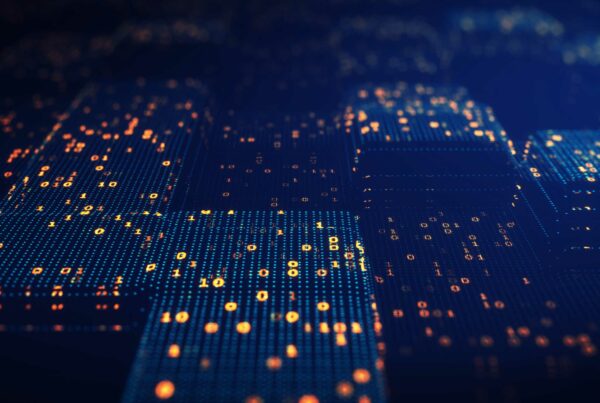In recent years, Augmented Reality has become popular and gaining attention for its everyday use in our lives! AR is admired by masses because it brings the elements of the virtual world into our real world, thus taking us into a different level of imagination altogether. Imagine the most sought after game Pokémon Go which was released a few years ago and soared to the top of the download charts in less than a week! It had completely conquered the world! Have you ever wondered how this game was designed? Yes indeed, it was with the help of Augmented Reality! Augmented Reality (AR) is the technology that overlays digital images on a real background seen through a smartphone camera giving the user interactive experiences.
The launch of iOS 11 gives Augmented Reality (AR) a boost. The software is eligible out of the box for the new iPhone 8 and iPhone X, and for a download by millions of iPhones and iPads users. This latest version of ARKit for iOS 11 allows “fast and stable motion tracking” that makes objects look like they’re actually being placed in the real space, just by simply hovering over them. ARKit also features 3D mapping and is more impressive compared to other AR app creation environments.
Apple first showcased ARKit, at the WWDC in June 2018 and since then ARKit has been open to developers to get a feel for the new platform.
There are many areas in which Augmented Reality can play a major role. One of the areas is “Indoor Navigation”, where user can view the directions between two locations in malls, hospital or museums.
Indoor Positioning SystemWhat is the need of an Indoor Positioning System? The answer lies within big buildings, where some may spend an enormous amount of time finding what they are looking for – object/person. Shopping centres, airports and museums are just some examples where Indoor Positioning System would be of a great help to people. Can you imagine everyone would have an indoor map marked with their current position on a mobile phone and so how easy it would be be for others to locate them? This would definitely revolutionise the Indoor Navigation. There are of course other benefits with the Indoor Positioning Systems, like big organizations can deliver location-triggered content, location-based advertising and much more.
Let’s look at at why we need the Indoor Positioning System..Problem:
On an average, most people spend more than 80-90% of their time indoors, like in offices, undergrounds, shopping malls and airports. But most indoor systems (e.g., navigation systems, inventory management and elderly support systems) have been hampered by the lack of technologies that can provide accurate locations in real-time, in an energy-efficient manner and without additional expensive hardware. The essential test of indoor situating is the decent variety of indoor spaces and their discernment by people.
Challenges:
The positioning system as deployed indoors presented the following categories of challenges – Accuracy, Availability and Stability.
By Accuracy, we mean that the system didn’t always provide the correct position within the specified allowances (~1.5m). Availability problems are defined as not providing results within a constrained time limit (~3 Sec). Stability problems refer to not providing consistent results (especially when a user is in a borderline position).
Solution:
A client-based technology is used to keep track of individuals that might require a back channel for further information exchange (visualization of own position on a map, location-based alerts, task management etc.) and for navigation purposes.
Hence, a smart device with a specific application is handling the indoor positioning based on GPS in combination with the internal smartphone sensors (e.g. Accelerometer, Gyroscope, Magnetic field sensor, etc.). A position is determined on the smart device, but can also be transferred continuously to the backend to provide information to the supervisors about the user’s current location. Therefore, the device requires a network connection for which we used GPS.
We used GPS data, i.e. Longitude and Latitude to locate an user’s position. But this data needed to be converted into a 3D system. We used “ARKit” provided by Apple and “SceneKit” to manipulate 3D objects. The SceneKit is a high-level 3D graphics framework that helps you create 3D animated scenes plus effects in your apps. It includes a physics engine, a particle generator, and easy ways to script the actions of 3D objects, so you can describe your scene in terms of its content geometry, materials, lights, and cameras then animate it by describing changes to those objects.
We used following code to convert GPS data into Cartesian 3D coordinates:
Source:
Next we look at how to calculate the path between two locations?To create a path between two locations we have plotted Anchors meter apart from each other. By using this method we have collected data per path and stored in a database. As you can see in the image below, the red dots represent the Anchors.
Here, the idea is to show the route from one location to another, so that it will be easy for new users to travel indoors in any office or mall.
Future of AR
Without a doubt we can say that Augmented Reality will be used in multiple areas and domains and will change the day to day living. Some examples are as follows,
Digital Marketing:
Augmented Reality is known to be an enhanced marketing application that customers can engage with at all places – at home, in store, or on the go with other apps.Healthcare:
Both AR and VR can impact healthcare sector immensely! The use of technology in healthcare is basically a natural consequence of the technological development and data boom. There is plenty of data, but very specific kind, that has been flooding at the Physicians for years. The patient information in paper format was changed to the Electronic Health Records (EHR) and made digital, but the information flow remained the same – static! It should become more and more seamless and help the patients in their healing process. The patients’ lives cannot depend on whether the Physician can access the latest and most relevant data – and here AR can help us with Apps.
Training:
Instructive assets are amplified by Augmented Reality frameworks. AR can be utilized to reproduce occasions and additionally change books into 3D pictures – all superimposed continuously. Increased Reality is a fantastic case of virtual right hand for instructors in a classroom setting and can enable understudies to pick up a more profound comprehension on any subject. By covering substance to the media, the perusing background is made all the more improving, as in applications from Augment.
Workforce Training:
With Augmented Reality, specialists can learn diverse tasks all the more successfully and perform them all the more precisely – all on account of movement based guidelines and reference materials overlaid onto physical hardware. This decreases the reliance on printed copy directions or client manuals as the comprehension of how to settle issues is conveyed outwardly.
Augmented Reality has unlimited outcomes!
Conclusion:
As should be obvious Augmented Reality or Virtual Reality isn’t just about gaming. It has its place in different segments and ventures and before long will be of general use in our regular activities, too. Envisioning such a future, new ventures will give bleeding edge and customized AR/VR answers for a wide range of organizations helping them increase better brand acknowledgment, client commitment and expanded deals.
Ask us a question or talk to one of our experts. Email us or call us at +1.469.374.0500.














